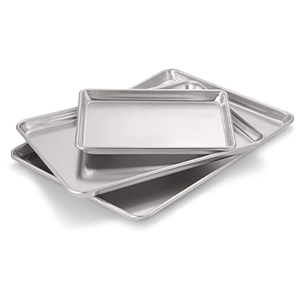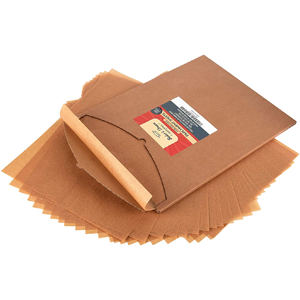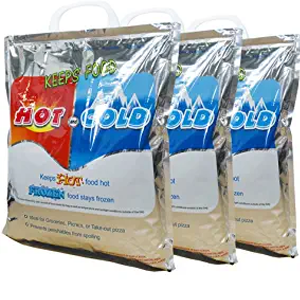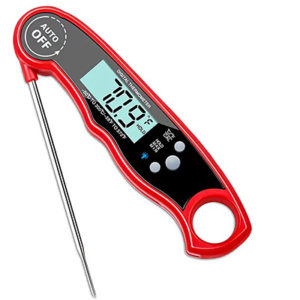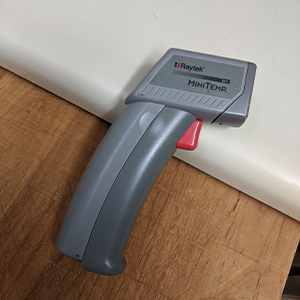Essential Salmon Cooking Tools The perfect tools to prepare amazing salmon dishes
Below you will find our hand-picked selection of tools for cooking amazing salmon dishes. Though in all honesty, they work for all the other types of fish too.
Slotted Fish Turner
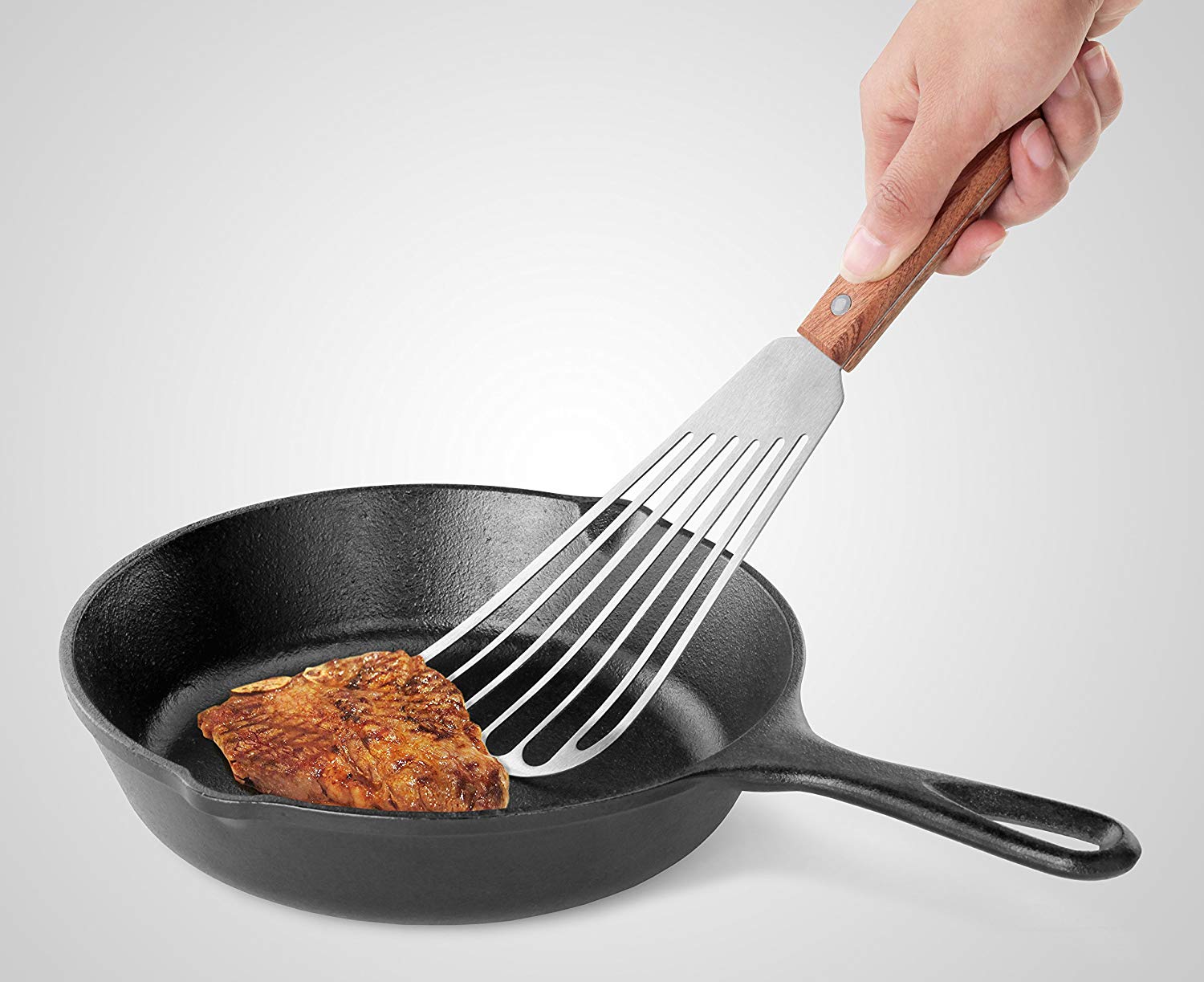
While you may be able to squeak by with your regular old turner, if you really want to cook fish right, you need a turner built for the job.
A slotted fish turner is flexible for getting under the fish easily while minimizing surface area to reduce friction. If you want a perfect presentation, this is essential!

Aluminum Sheet Pans
Skip the cheap, non-stick sheet pans. A good set of heavy gauge solid aluminum sheet pans will serve you for decades to come.
I like a variety of sizes so you can use the one appropriate to how much you are cooking. Want non-stick? Simply use parchment paper on your pans!
Parchment Paper
Non-stick pans are coated with toxic chemicals, are cheaply made and wear out quickly. Where do all those chemicals go as they flake off? Into your food!
The best solution for this is to use solid aluminum sheet pans and a sheet of parchment paper. This makes your pan non-stick and makes clean up a breeze!
Cold Bag
While not a cooking tool, a cold bag is an essential element to making really good salmon. Long trips through the grocery store and the ride home will cause the salmon you just bought at the meat counter to break down giving your salmon that fishy smell everyone hates.
If you put your salmon immediately into a cold sack along with a cold pack, it will help keep it safe and cold all the way home, and help prevent it smelling funky!
Instant Read Thermometer
The easiest way to know just exactly when your salmon (or any other dish) is done is to use an instant read thermometer.
They are inexpensive, accurate and will ensure that you don’t overcook your salmon!
